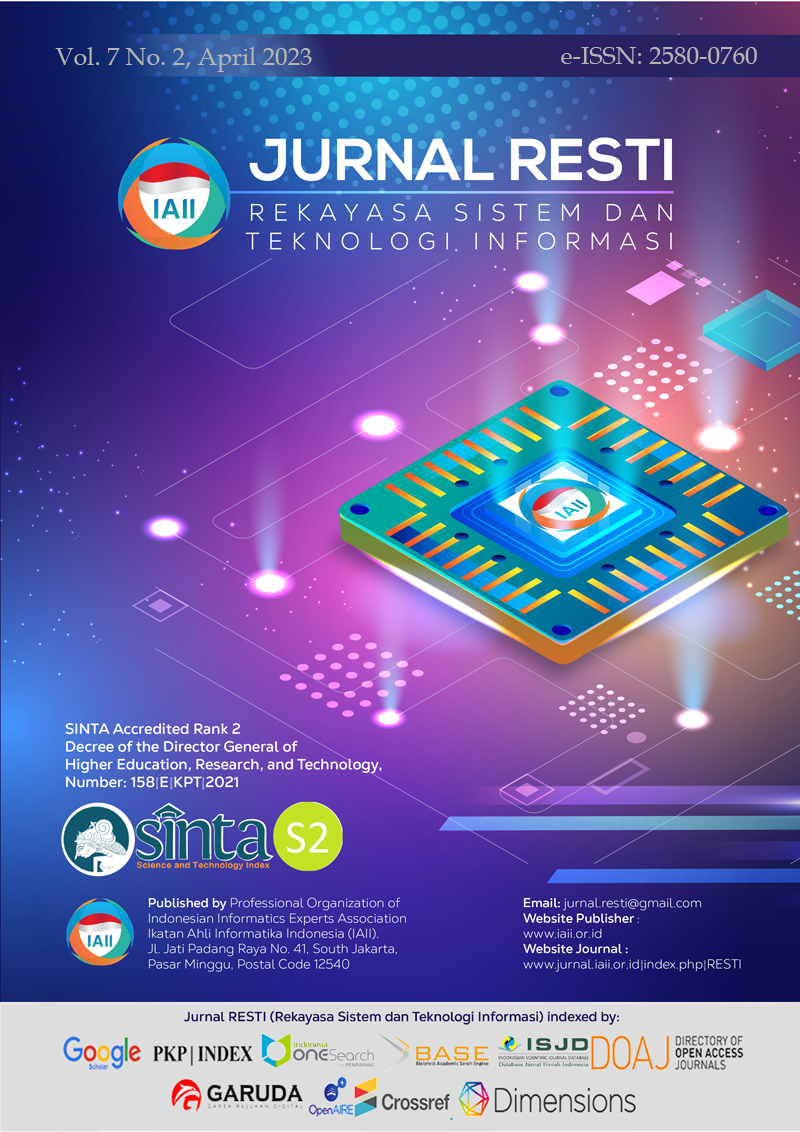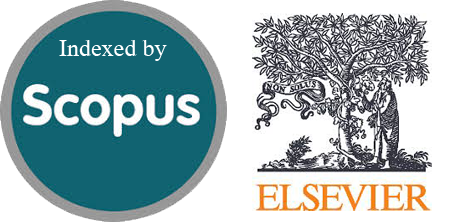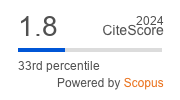Deep Learning Implementation using Convolutional Neural Network for Alzheimer’s Classification
Abstract
Alzheimer's disease is the most common cause of dementia. Dementia refers to brain symptoms such as memory loss, difficulty thinking and problem solving and even speaking. This stage of development of neuropsychiatric symptoms is usually examined using magnetic resonance images (MRI) of the brain. The detection of Alzheimer's disease from data such as MRI using machine learning has been the subject of research in recent years. This technology has facilitated the work of medical experts and accelerated the medical process. In this study we target the classification of Alzheimer's disease images using convolutional neural network (CNN) and transfer learning (VGG16 and VGG19). The objective of this study is to classify Alzheimer's disease images into four classes that are recognized by medical experts and the results of this study are several evaluation metrics. Through experiments conducted on the dataset, this research has proven that the algorithm used is able to classify MRI of Alzheimer's disease into four classes known to medical experts. The accuracy of the first CNN model is 75.01%, the second VGG16 model is 80.10% and the third VGG19 model is 80.28%.
Downloads
References
A. Association, “2019 ALZHEIMER’S DISEASE FACTS AND FIGURES Includes a Special Report on Alzheimer’s Detection in the Primary Care Setting: Connecting Patients and Physicians,” Alzheimer’s Dement. Vol. 15, Issue 3, pp. 321–387, 2019, [Online]. Available: https://www.alz.org/media/Documents/alzheimers-facts-and-figures-2019-r.pdf%0Ahttps://alz.org/media/Documents/alzheimers-facts-and-figures-2019-r.pdf.
E. Picón et al., “Does empirically derived classification of individuals with subjective cognitive complaints predict dementia?,” Brain Sci., vol. 9, no. 11, pp. 1–18, 2019, doi: 10.3390/brainsci9110314.
S. Sarraf, D. D. Desouza, J. A. E. Anderson, and C. Saverino, “MCADNNet: Recognizing stages of cognitive impairment through efficient convolutional fMRI and MRI neural network topology models,” IEEE Access, vol. 7, no. Mci, pp. 155584–155600, 2019, doi: 10.1109/ACCESS.2019.2949577.
Alzheimer’s Disease International, “The costs of dementia: advocacy, media and stigma.,” World Alzheimer Rep. 2019 Attitudes to Dement., pp. 100–101, 2019, [Online]. Available: www.daviddesigns.co.uk.
C. Lynch, “World Alzheimer Report 2019: Attitudes to dementia, a global survey,” Alzheimer’s Dement., vol. 16, no. S10, p. 38255, 2020, doi: 10.1002/alz.038255.
“2020 Alzheimer’s disease facts and figures,” Alzheimer’s Dement., vol. 16, no. 3, pp. 391–460, 2020, doi: 10.1002/alz.12068.
G. Umbach et al., “Time cells in the human hippocampus and entorhinal cortex support episodic memory,” Proc. Natl. Acad. Sci. U. S. A., vol. 117, no. 45, pp. 28463–28474, 2020, doi: 10.1073/pnas.2013250117.
S. Shantanam and MUELLER, “乳鼠心肌提取 HHS Public Access,” Physiol. Behav., vol. 176, no. 1, pp. 139–148, 2018, doi: 10.1038/s41583-018-0067-3.Imaging.
R. Jain, N. Jain, A. Aggarwal, and D. J. Hemanth, “Convolutional neural network based Alzheimer’s disease classification from magnetic resonance brain images,” Cogn. Syst. Res., vol. 57, pp. 147–159, 2019, doi: 10.1016/j.cogsys.2018.12.015.
K. Amit, Machine Learning Techniques. 2019.
S. A. Ajagbe, K. A. Amuda, M. A. Oladipupo, O. F. AFE, and K. I. Okesola, “Multi-classification of alzheimer disease on magnetic resonance images (MRI) using deep convolutional neural network (DCNN) approaches,” Int. J. Adv. Comput. Res., vol. 11, no. 53, pp. 51–60, 2021, doi: 10.19101/ijacr.2021.1152001.
D. Kaul, H. Raju, and B. K. Tripathy, Deep Learning in Healthcare BT - Deep Learning in Data Analytics: Recent Techniques, Practices and Applications. 2022.
M. B. T. Noor, N. Z. Zenia, M. S. Kaiser, S. Al Mamun, and M. Mahmud, “Application of deep learning in detecting neurological disorders from magnetic resonance images: a survey on the detection of Alzheimer’s disease, Parkinson’s disease and schizophrenia,” Brain Informatics, vol. 7, no. 1, 2020, doi: 10.1186/s40708-020-00112-2.
A. Voulodimos, N. Doulamis, A. Doulamis, and E. Protopapadakis, “Deep Learning for Computer Vision: A Brief Review,” Comput. Intell. Neurosci., vol. 2018, 2018, doi: 10.1155/2018/7068349.
K. Oh, Y. C. Chung, K. W. Kim, W. S. Kim, and I. S. Oh, “Classification and Visualization of Alzheimer’s Disease using Volumetric Convolutional Neural Network and Transfer Learning,” Sci. Rep., vol. 9, no. 1, pp. 1–16, 2019, doi: 10.1038/s41598-019-54548-6.
B. Khagi, C. G. Lee, and G. R. Kwon, “Alzheimer’s disease Classification from Brain MRI based on transfer learning from CNN,” BMEiCON 2018 - 11th Biomed. Eng. Int. Conf., pp. 1–4, 2019, doi: 10.1109/BMEiCON.2018.8609974.
SARVESH DUBEY, “Alzheimer’s Dataset ( 4 class of Images) Images of MRI Segementation.” 2020, [Online]. Available: https://www.kaggle.com/datasets/tourist55/alzheimers-dataset-4-class-of-images.
N. W. S. Wardhani, M. Y. Rochayani, A. Iriany, A. D. Sulistyono, and P. Lestantyo, “Cross-validation Metrics for Evaluating Classification Performance on Imbalanced Data,” 2019 Int. Conf. Comput. Control. Informatics its Appl. Emerg. Trends Big Data Artif. Intell. IC3INA 2019, pp. 14–18, 2019, doi: 10.1109/IC3INA48034.2019.8949568.
Copyright (c) 2023 Jurnal RESTI (Rekayasa Sistem dan Teknologi Informasi)

This work is licensed under a Creative Commons Attribution 4.0 International License.
Copyright in each article belongs to the author
- The author acknowledges that the RESTI Journal (System Engineering and Information Technology) is the first publisher to publish with a license Creative Commons Attribution 4.0 International License.
- Authors can enter writing separately, arrange the non-exclusive distribution of manuscripts that have been published in this journal into other versions (eg sent to the author's institutional repository, publication in a book, etc.), by acknowledging that the manuscript has been published for the first time in the RESTI (Rekayasa Sistem dan Teknologi Informasi) journal ;








